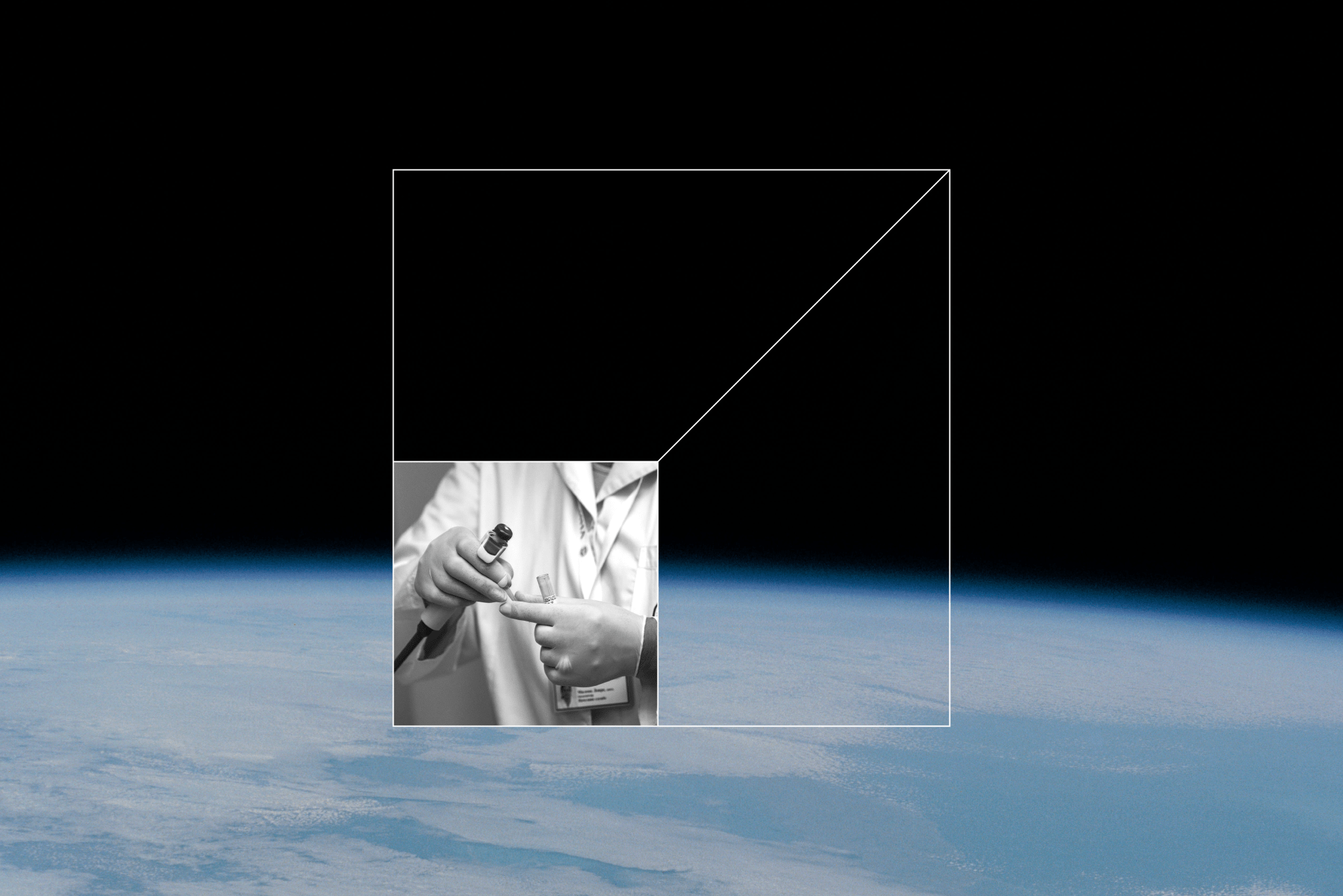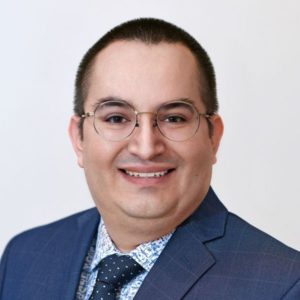An interview with TRISH Scientist Emmanuel Urquieta Ordonez
The space economy is growing. More humans will venture beyond Earth in the coming years — and those humans will have healthcare needs in space. The past half-century of space travel has also helped create inventions and technologies that have improved life on Earth. What will the next few decades of space exploration mean for health tech innovation?
The Translational Research Institute for Space Health (TRISH), a Baylor College of Medicine-led consortium with the California Institute of Technology and the Massachusetts Institute of Technology, is “a lean, virtual institute empowered by the NASA Human Research Program to solve the challenges of human deep space exploration.” We spoke with TRISH Scientist Emmanuel Urquieta Ordonez about space medicine and its applications here on Earth.
Is healthcare in space wildly different from healthcare on Earth?
Space medicine is very different from traditional medicine because astronauts are one of the healthiest populations in the world. So our job is to keep them healthy, whether they’re on the International Space Station or making a trip to Mars. Most importantly — and this is more challenging — we want them to be as healthy as possible when they return to Earth.
Research and diagnostics are tricky in space. Even the space station, which is very safe from an engineering perspective, is a risky place to conduct studies. The lack of gravity places a limitation on how much blood you can draw; the blood that’s traditionally in the leg is mostly in the head.
And then there are human limitations — every research project needs to be accepted by the astronauts. They volunteer, and every time they get selected for a mission, there’s a list of experiments NASA wants to do. The astronauts get to choose which ones they want to participate in. There’s always a huge waiting period for flight studies; it’s not unlikely to wait four or five years for it to be flown, then two more years to collect the samples, then one more year to analyze. Because so few people go into space, some studies never get to fly at all.
One of our challenges at the Translational Research Institute for Space Health (TRISH) is that we have been tasked with developing technologies and medical treatments for a mission to Mars. The spacecraft that will go to Mars does not yet exist. Part of our job is to predict the needs of the future and start thinking of the technologies that could potentially be deployed for these types of initiatives. And there are many unique factors to consider.
One example of an environmental consideration is radiation. Once astronauts leave the magnetic protection of Earth, they are exposed to radiation — it’s a low-dose, chronic radiation. So we’re coming up with novel ideas to protect them from this radiation.
From a logistical standpoint, you cannot resupply a deep space mission. So once you launch the vehicle, it will have to contain all the food, all the medicine, everything they will need for three years. You cannot stop in a grocery store or drugstore on the way to Mars! Most medications expire in about a year — so we’re coming up with new ideas to make medications last longer and/or produce medications on the spacecraft.
We face a similar challenge with food. Four people need a huge amount of food for a three-year mission. It takes up a lot of volume on the spacecraft, but it’s a very small spacecraft that will go to Mars. We’re trying to develop technology that will enable us to produce food that’s nutritious and doesn’t take a lot of mass on the spacecraft.
And then another consideration is communicating with astronauts on Mars. It’s a 40-minute delay in communication, and there will be a period of one month when the sun is between the Earth and Mars. There will be no communications during that time. This is a complete change from how we operate now on the space station; if something happens to astronauts on the ISS, they can get on the phone with a huge team of physicians, engineers, and other experts, and there’s almost no delay in communications. In the case of a medical emergency, an astronaut could be brought back to Earth in a matter of hours. On a mission to Mars, once you pass the moon, you can’t just turn the spacecraft around and come back. So we’re developing technologies that are network-enabled, with artificial intelligence capabilities, for them to be able to have autonomous, self-reliant medical care, without having to wait for input from a flight surgeon.
It sounds like some of these innovations would help doctors and patients on Earth.
There are a lot of things we’re doing that have huge applications on Earth, especially in medical diagnostics and treatment capabilities.
These conditions in space, these constraints and limitations, are very similar to isolated communities and underserved populations around the world. Some people have to drive for miles to see a doctor; some places are even more remote or don’t have electricity. Some of the applications we’re developing have huge potential to improve healthcare for these communities.
The technologies we’re developing also have to be very small and light, and they need to consume as little power as possible. Ideally, they’re also devices that will serve more than one purpose. And the things we design will be used by people who are not physicians.
For example, we’re developing technologies that will allow astronauts to take an image of the retina without dilating the pupil. The device will take a picture of their eye, then compare the picture with a previous healthy picture; if the system detects any pathological differences, then it will alert the crew.
We’re also developing a system that will predict a medical condition before it happens. And also a very small, very portable device to make a complete blood count or basic metabolic panel with a minimum amount of blood. You can’t take large blood samples from astronauts when you need to make these assessments.
Astronauts are a very unique population and most of the things we develop for space flight are only for space flight. But a lot of the development that we are doing could be adapted. Maybe in the next five to 10 years, you would see them enter the market.
What do you think health innovators should know about space medicine?
Most of the companies developing a product for Earth are focused on terrestrial health applications. But they may already have a solution that will work in space — they just don’t know it. So we educate folks in incubators and accelerators about the needs for space; they should know the similarities between Earth and space implications. One of the things we do is really connect the dots between the things they’re already developing and the needs we have.
For technologies that are more advanced — maybe they’re getting close to market or already in the market — it’s a matter of making them compatible for space flight. Both space healthcare and terrestrial healthcare are moving toward the same goals: giving people access to healthcare in real time, and making everything easier and less invasive.
How are you helping organizations connect these dots, and what are you looking for when selecting and funding new solutions?
We like to play in both ends of the research and development spectrum. We’re looking for proof-of-concept ideas — those back-of-the-napkin ideas — that could be potentially very disruptive. These new ideas may be rather risky, but could result in something that is absolutely incredible, that could potentially change how we approach a solution.
And then on the other end of the spectrum, the more developed side of things, we like to look at technologies that are almost fully developed. Some of them maybe are already in the market. These technologies may only need to be tweaked to support space health.
We engage with companies and academia through solicitations. We release traditionally one big solicitation tailored toward academia and one that’s more tailored toward industry. These calls for proposals are topic-specific, and we have a list of requirements. We receive proposals from all over the United States, which we review from a scientific and a programmatic relevancy standpoint. And then we select them, we fund them, and we work with them for one to three years. And then we take the technology they produce back to NASA. They could eventually be used on a mission to Mars in 10 to 20 years.
We have very different companies — all types of technologies at different stages of development. One exciting example is the Butterfly IQ device, which was approved last December. It’s an ultrasound probe you connect your cell phone — one single probe tests different organs. We got to know this company before the device was FDA-approved, and we funded them and will be flying one of these devices to the space station in the coming months.
We just launched a new social platform called the TRISH Orbit that helps us connect with people who have ideas. It’s a community for space enthusiasts, innovators, and researchers alike, and it’s open to all. There are groups and topics for the different areas of space research we’re managing, so our Orbit community has access to people working in similar areas. We also host webinars and a series of talks to help people learn more about space medicine and the opportunities to collaborate. We share these events in our TRISH newsletter — anyone can subscribe.




